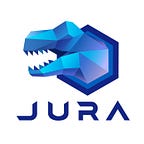New Challenge — The Blockchain Digital Game
The Development History of Blockchain Game
From the collection games like CryptoKitties and CryptoHero in 2017, to the lottery games such as FOMO3D in 2018, to gambling games which are popular in EOS, Tron and other public chains, the pattern of Blockchain Games has undergone tremendous changes in a short time.
In fact, Blockchain Games have been around for a long time.
In 2010, the game developer Andrew Tepper conceived the blockchain game model. Dragon’s Tale is set in an open 3D world which showed that the worlds of cryptocurrency and video games could be combined. Players can search for eggs, milk and other materials in the game. The game was launched in July 2013; it is the first cryptocurrency based game.
In September 2013, another significant early game was Huntercoin which first launched as a prototype. It is a massive multiplayer online role-playing game (MMORPG). This is a P2P de-centralized encrypted currency game. Players control hunters to collect gold coins, and mine the game’s own cryptocurrency (HUC) which would actually transfer them to the players’ crypto-wallets.
Between 2014 and 2015, the first batch of gambling websites used Bitcoin as gambling funds appeared, such as SatoshiDice, BitZino, Bitino and Bit777. Their increasing numbers further corroborate the popularity of cryptocurrency incorporation into games.
Since 2015, blockchain games that offer cryptocurrency as a reward or payment have become more popular, such as TurboCharged, FlapPig, and SaruTobi. Although most of these games contain in-game purchases, they are “free-to-play” games.
In 2016, some novel blockchain game modes appeared in the blockchain game industry. For example, BitQuest server combined bitcoin mining with game trading system and develops a game called “ Spells of Genesis “. It mainly uses blockchain technology to store and to guarantee the authenticity of collectable cards its players win.
In 2017, Blockchain Game ushered in a new breakthrough. Force of Will Battle Simulator which is a new blockchain project developed by the Swiss game developer, was taken to Japan. So far the project has been a success, with the value of in-game tokens in Force of Will Battle Simulator rising exponentially.
On November 28, 2017, CryptoKitties was launched and became the hottest Dapp in Ethereum within a week. It takes advantage of an important attribute of blockchain technology: transaction information cannot be falsifying. In this game, no one has the right to change the game data. This means that neither game developers nor gamers can cheat in the game, which creates an absolute trust relationship between all the players in the game.
In summary, the most common use of cryptocurrency in games today is for rewarding players for their gaming efforts.
The Current situation of Blockchain Game
The number of Blockchain Games using blockchain technology has increased in the last few months. But we need to realize that only a small number of these games have used the mechanics of Ethereum or Bitcoin to provide a decentralized gaming experience.
Most of developer only use cryptocurrency to bring new gameplay to the game, rather than developing blockchain games from the underlying technology. For the most part, the implementation of cryptocurrency or blockchain is an addition to existing gameplay dynamics and genres, rather than serving as a fundamental reworking of them.
We counted the five most popular blockchain games on Google Play, which cover puzzle games, strategy games, 2D racing games and other modes. Blockchain Game, Alien Run, Miner Simulator, Itadaki Dungeon, and Spells Of Genesis are the five most popular cryptocurrency related games available right now. All five would work perfectly well without any kind of blockchain or cryptocurrency code.
However, these games prove that blockchain elements can be added seamlessly to video games without any kind of negative impact. They are efficient at enhancing games.
The Future of Blockchain Game
With the emergence and continuous maturity of blockchain technology, the rules of game setting and virtual assets storage are decentralized which become feasible from the technical level. The convenience of virtual assets on the chain also makes blockchain easier to apply in the game scene.
Rather than being indifferent to the new technology and rushing to launch blockchain-based games, global game industry giants are studying the possibilities of the new technology in the game industry. Whether for the purpose of promoting their own games or to protect the rights of consumers, more and more game developers are starting to apply blockchain technology to their game products.
A growing number of big game developers are considering integrating the technology. Not only are game developers, but global brands like Sony are showing a lot of interest in this technology. SONY has filed a new patent for a digital game access system in the spring of 2018. And the blockchain platform of SONY will allow users to monitor their digital rights and reduce the amount of “Pirated” content.
Will blockchain give big game companies a chance to show off their capabilities, or will it take the game industry in a whole new direction?
The 8th Global Mobile Game Confederation (GMGC) was held in Beijing on June 17th, 2019. Jura Team was invited to attend GMGC — Chain Plus, Blockchain Digital Game Innovation Summit 2019. Many excellent blockchain game projects, investors and well-known media participated in the summit. Jura team had the deep communication with them and looks forward to more cooperation in the future.
The answer may come in the near future. The fact that the technology is already widely used in games is encouraging for the blockchain industry. At the same time, another question arises: Is this technology only for Currency Transfers or to improve to the game experience?
